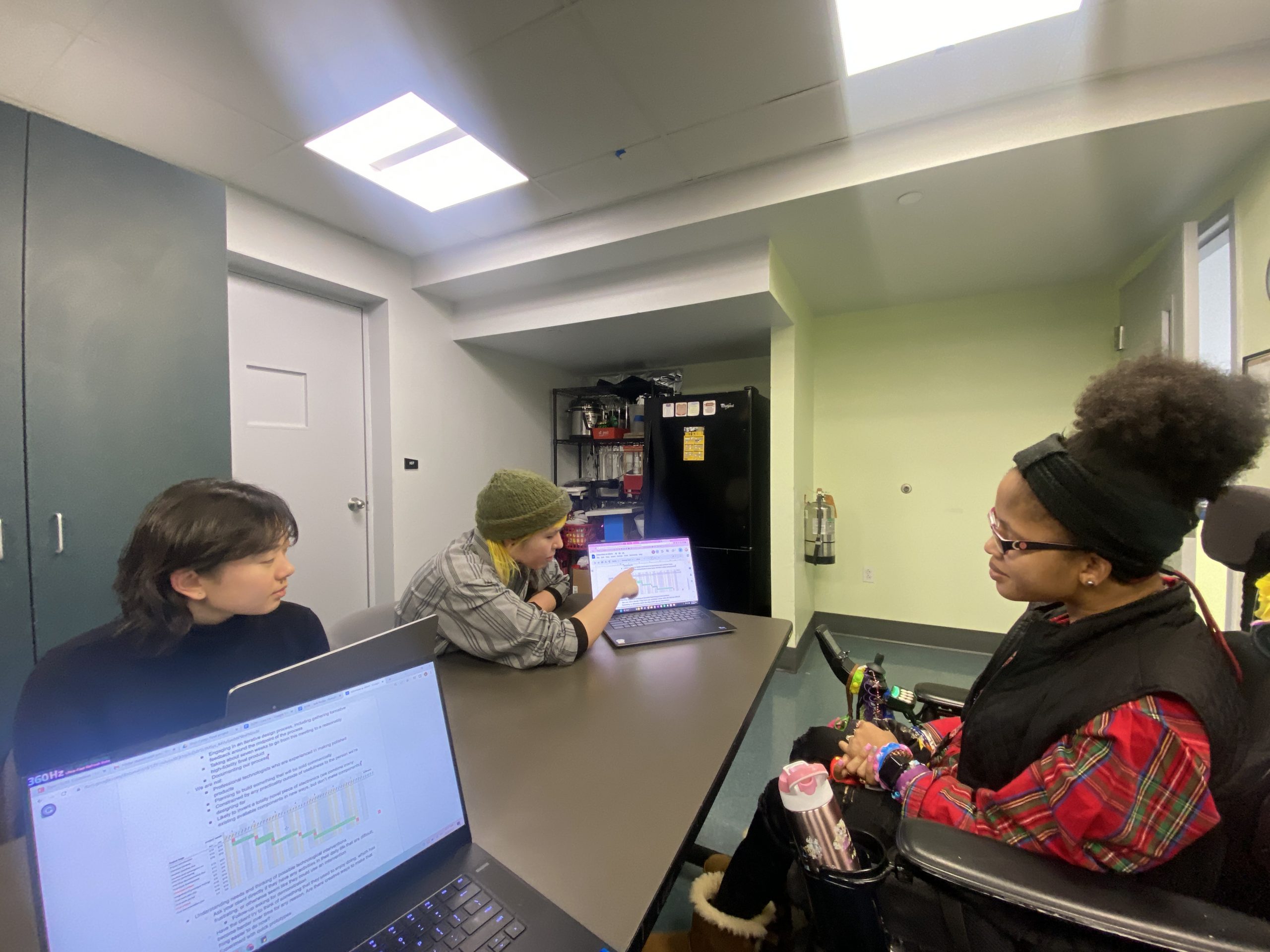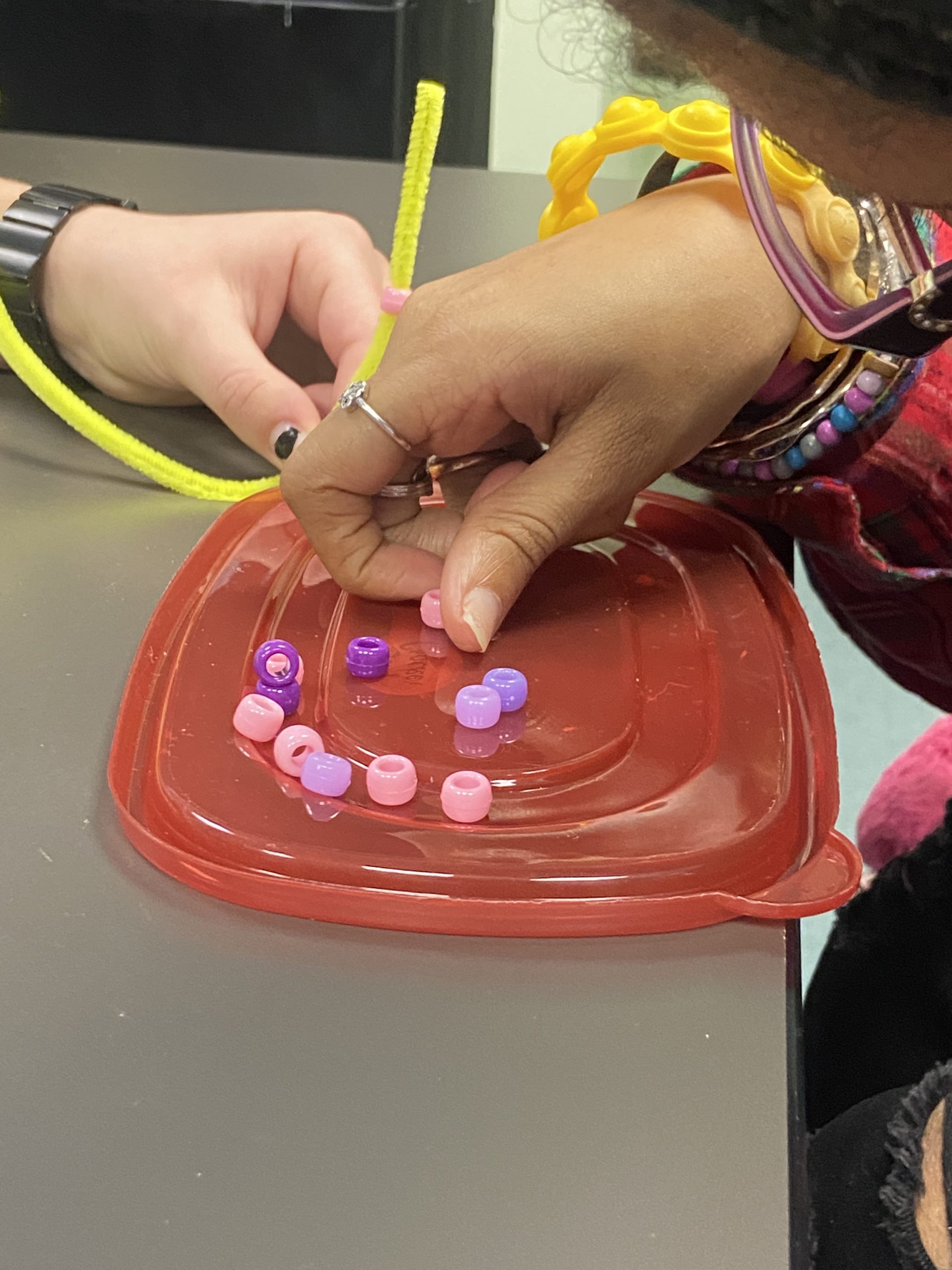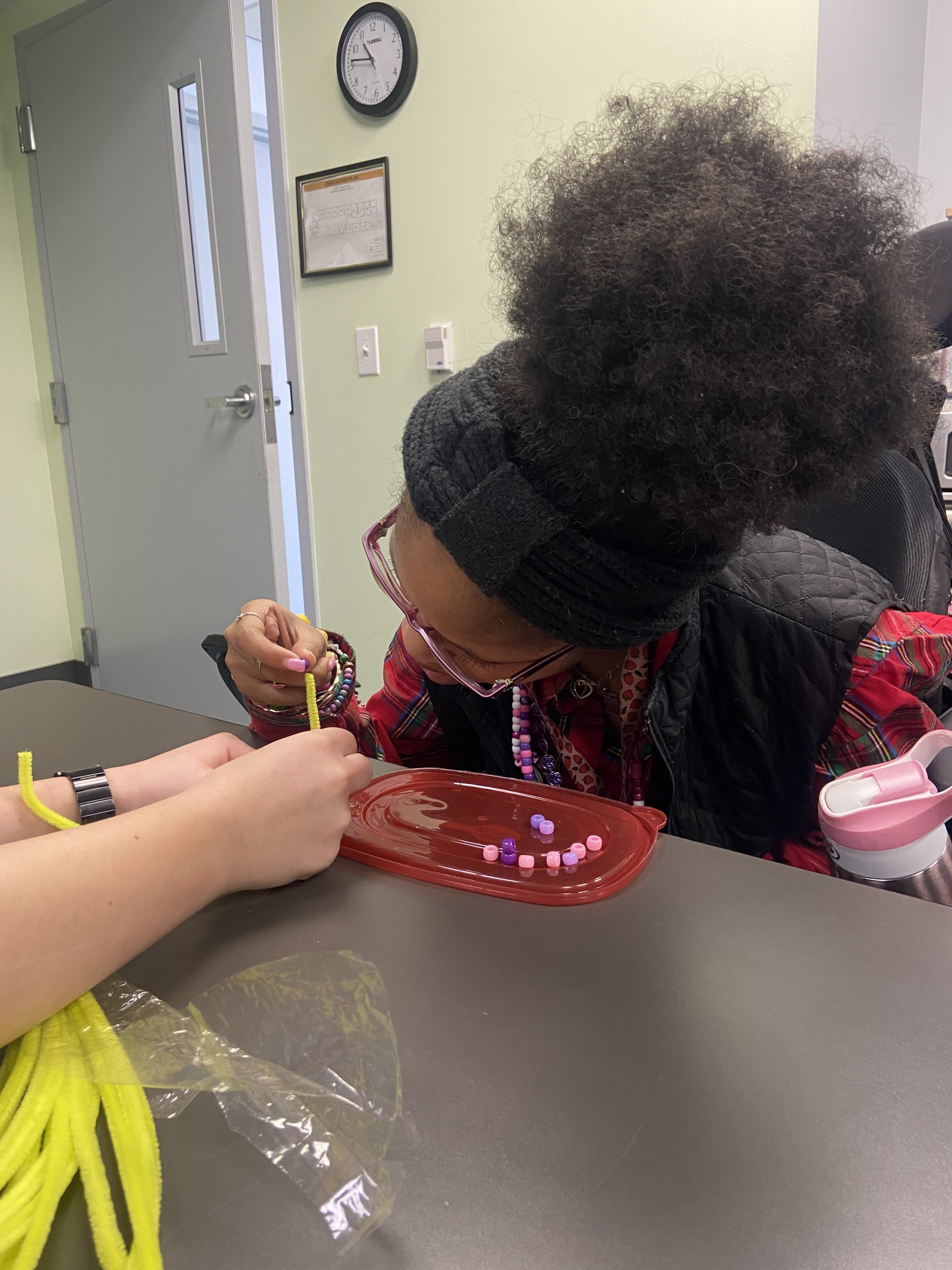This project connects our group (Team Peaches!) with a client from Community Living and Support Services (CLASS). CLASS is an organization that provides a myriad of services to folks with disabilities as they explore options, participate in the community, and strive toward equality. Our goal is to create an assistive device for our client to use in their daily life. Our group consists of Mo, Juhi, and Michelle. We got matched with Darnisha. We met with Darnisha at CLASS on March 20th to get to know her better and figure out what type of device might be useful for her.
Meeting agenda:
- Introduction/ice breaker
- Name, major, year, interests
- Talk about daily routine
- Ask about her daily routine
- Ask why she wants to participate in the project
- Explain our personal assistive device projects
- Explanation and clarification about project goals
- We are:
- Trying to build prototype useful devices
- Taking about seven weeks to go from this meeting to a reasonably high-fidelity final product
- Documenting our process
- We are not:
- Professional technologists who are experienced in making polished products
- Planning to build something that will be sold commercially
- Constrained by any practicality outside of usefulness to the person we’re designing for
- We are:
- Quickly go over timeline again

Project timeline.
- Understanding needs and thinking of possible technological interventions
- Interests
- Daily routine
- Ask directly about difficulties
- Follow-up asking for demonstration
- Ask if there is anything she used to enjoy that has now become difficult
- Experiment with quick prototypes
- Conclude
- Thank client for their time, make sure they have your contact information.
Meeting summary and major takeaways:
First, we did some brief introductions and went over the goals of the project again. We explained what we are trying to accomplish, and what we are not trying to accomplish with the project. During this part of the discussion, we also talked about the devices we each made for our personal assistive devices to give her an idea of the types of projects we could make for this course. Then, we went over the timeline of the whole project to make sure we are all on the same page.

Going over the timeline with Darnisha.
We discovered a lot about Darnisha’s interests. She is a very creative person and likes to express that in many different ways. She enjoys painting, watercolor, collage, cut and paste, and other arts and crafts. She also loves fashion (She had just won “Best Dressed” at a camp over the weekend!). She particularly enjoys accessorizing with jewelry and beads. Her favorite colors are pink and purple. She really enjoys these activities, but her limited mobility can sometimes make it difficult for her to fully enjoy them.
We also discussed a bit of her daily routine. Some things she mentioned that she has difficulty with is putting on socks and shoes, because she is unable to bend over or pull them up. She also mentioned that she struggles to remember where she puts her phone down sometimes.
Once we had discussed some of her interests and daily routines, we talked a bit more about specific ideas. We talked about some difficulties with arts and crafts. She mentioned that she enjoys using various cut out shapes in her creations, but struggles with the action of cutting. She said that she typically uses a few set shapes in her crafts— circles, squares, rectangles, and triangles. We talked a bit about ways that we could help her cut out shapes.
Darnisha also enjoys wearing a lot of beaded jewelry and expressed that she would like to be able to make them herself. Currently, she needs someone else to create beaded jewelry for her, because she’s unable to both hold a string still and put beads on it. We had brought some craft supplies to make small prototypes, so we asked her to string some beads on a pipe cleaner so we could see how she is currently able to handle beads. She was able to pick up the beads and string them on the pipe cleaner as long as the pipe cleaner was rigid and held in place.

Darnisha demonstrating how she uses beads.

Darnisha stringing beads on a pipe cleaner.
Finally, we discussed some ways of input and output that she is comfortable with. She prefers light as an indicator. She mentioned that she can get startled easily, so it would probably be best to not use sound. She is used to switches and joysticks, and is comfortable with typing.
We left off with making sure that there weren’t any unanswered questions, and that we were all on the same page. As we left, Darnisha showed us one of her paintings of a beautiful ocean scene at night that was on display in the hallway.
Our thoughts after holding the meeting and discussing as a team:
Our meeting with Darnisha was great. We started off by introducing ourselves which perhaps built the conversation itself. The introductions led us into discussing our interests which made it easier for us to target areas of interest for Darnisha. Talking about and showing her our own previous projects also helped us explain the scope and context of the course, as well as this project, more clearly.
We followed our meeting agenda as our client was actually answering very to the point. Next time, we might want to ask additional follow up questions more related to her abilities as during the interview we might have spoken a lot about her interests and activities she might need help with, but we missed out on a couple of opportunities for her to engage physically with something. For example, Darnisha said that she is able to paint pretty independently, but it might’ve been beneficial to see her engage with a paint brush to see if we could make the process even easier for her.
We covered a good range with the questions we asked to Darnisha as they led from her daily routine to her interests, involving things she needs assistance with. As mentioned earlier, we could have asked her to engage more physically with things to help us know better about how she does those things in particular. As we did an activity with her about making a bracelet for her using beads and that gave us a good insight into her ability with her upper body and hands.
We as a group had a uniform opinion about the interview as we all had similar ways of questioning the client which made us realize we were actually targeting the same realm.
